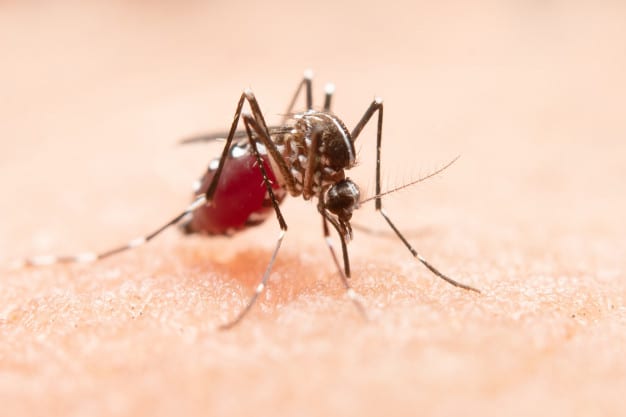
With heat soaring in this already record-breaking Texas summer, we all know what to expect—hot days, sticky nights, family barbecues, and an abundance of creepy-crawly residents coming out of hiding. Yes, it’s peak pest season. But how do you spot a legitimate threat from something that’s just … spooky?
Many of us will instinctively flee from the harmless but scary-looking American cockroach, dirt dauber, or garter snake. But when it comes to pests that really can be dangerous, it’s important to be able to recognize and avoid risks to you, your family, and your pets.

Fire ants
If you’ve ever felt the sting of a fire ant bite, you’ve probably tried to avoid them ever since. But spotting them can be tricky. In addition to keeping an eye out for any mounds of dirt in your yard or along sidewalks you frequent, it’s important to take the weather into account. After a drenching rain, fire ants will often vacate their mounds until they find a new home, so you could encounter them on flat ground as well. Fire ants can even form rafts to float down rivers and streams, so be sure to check any puddles before your kids go splashing in after a hard rain, and be aware when tubing or kayaking after rainy weather.

Mosquitos
We all know mosquitos are natural residents in our area that irritate us with swarming, buzzing, and itchy bites. But mosquitos can also be vectors of disease—in fact, this year’s first cases of West Nile Virus have already been confirmed in Harris and Williamson counties. Having your yard regularly treated for mosquitos can be a kid- and pet-friendly alternative to sprays that contain DEET.

Asps
Asps are a type of venomous caterpillar that’s most often found in shady trees during the summertime. Silky and teardrop-shaped, they can appeal to kids as something soft to pet or play with—but their sting is serious, leading to extreme pain or even a visit to the ER. They’ll often drop out of trees and wind up on the ground, where kids and pets can easily reach them. Treatments for your lawn and trees are available for asps through pest control and landscaping services, but our first and best piece of advice is: if you see a furry caterpillar, don’t touch it.

Paper wasps
Is it a dirt dauber or a wasp? There are all kinds of anecdotes out there for how to tell them apart, and yes, there are physical differences, but trust us when we say you wouldn’t want to get close enough to spot them. The best way to avoid being stung by a paper wasp is to avoid invading an area where they’re nesting. They prefer shady, tucked away areas like shrubs, the underside of wooden fence slats and treehouses, inside playground equipment, and underneath your pool’s diving board. A thorough inspection of these areas prior to play or picnicking can go a long way toward preventing stings.

Centipedes and scorpions
We’re grouping these creepers together because they’re similar in nature—attracted to shade but also warmth, and can often be found underneath items that have been undisturbed for a while, like rocks, boards, and pavement cracks. Scorpions tend to travel in pairs, so you if you see one, be extremely cautious, as there is likely another one nearby.
Whisk away your summer scaries
Natran Green Pest Control can help control or even prevent pest problems in your lawn and home this summer using low impact, people-, plant-, and pet-friendly treatments. To learn more about our services, reach out to one of our experts at 713-366-4403 or visit us at natran.com.
